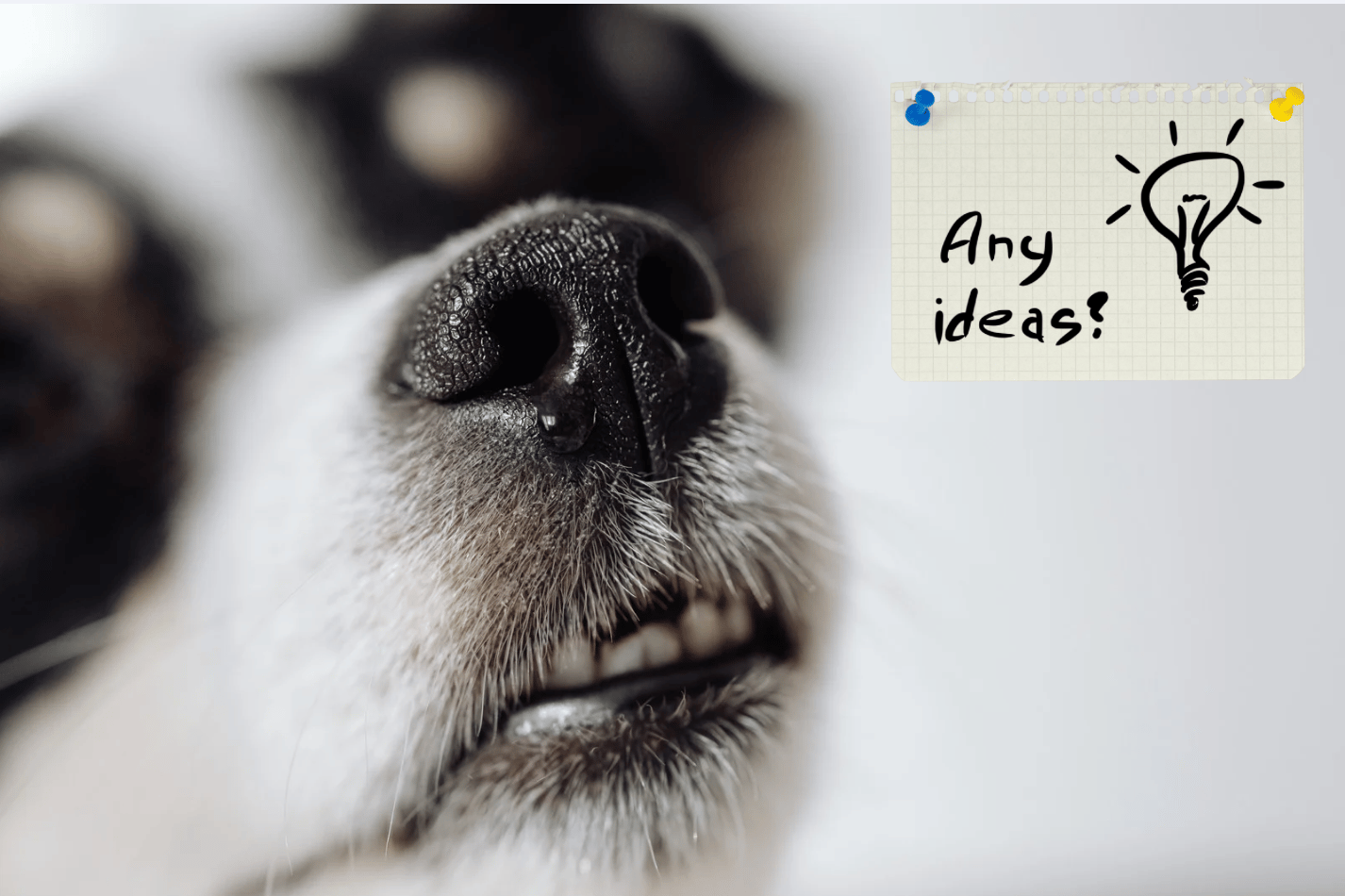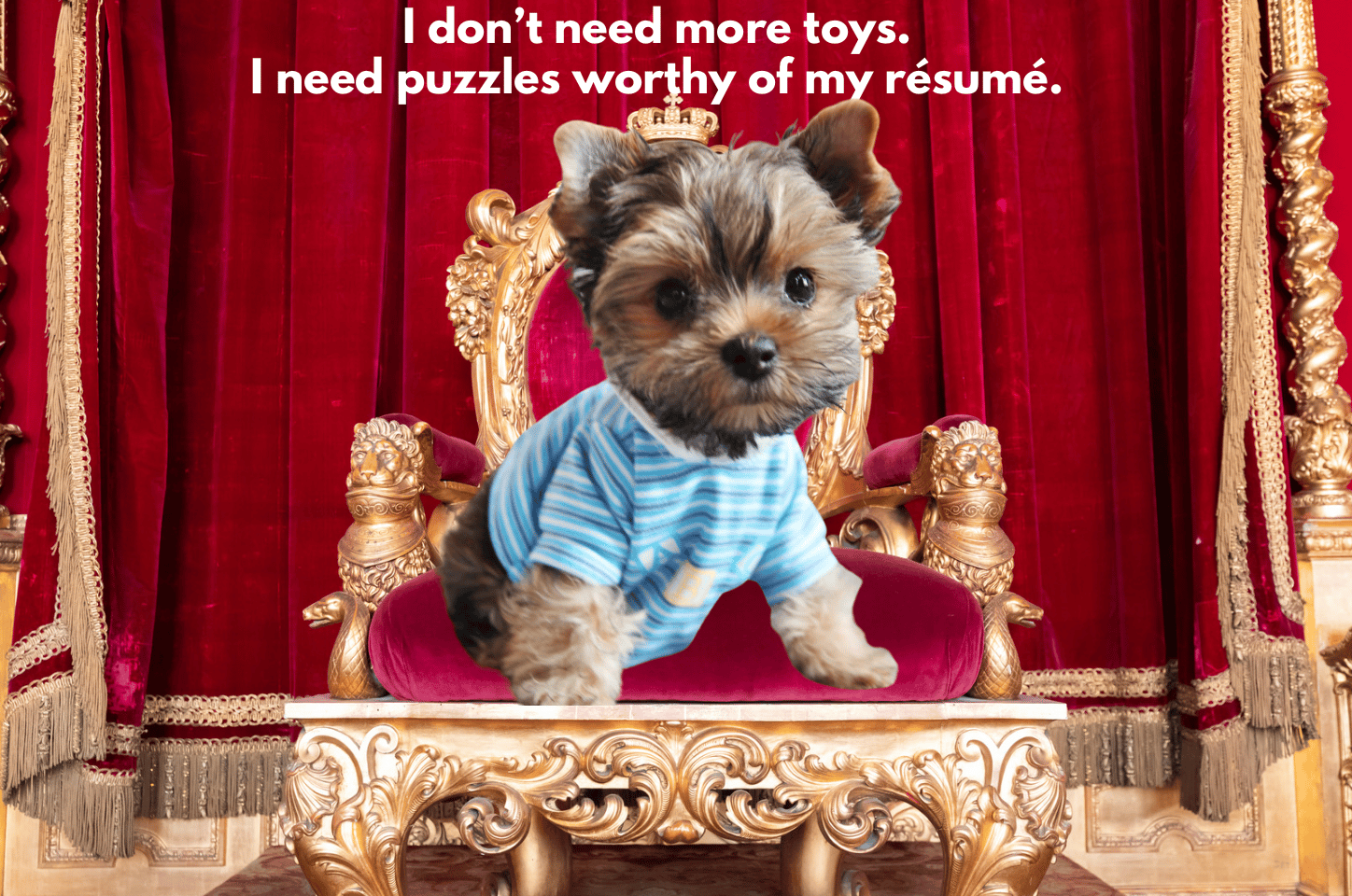Our dogs love when we bake - it smells so good! We chop cucumbers for the pup to “taste” while we bake so everyone is included.
See the latest holiday wear now in the Fido Fly Pup Shop!
What’s Wrong With Your Dog?

Would Your Dog Rate You as an F?
If your dog could fill out a performance review on you, “mental stimulation” might be the category where you’re underperforming. Walks? Check. Treats? Check. But when was the last time your dog’s brain actually broke a sweat?
Most dogs were bred for jobs such as herding, guarding, sniffing, and fetching but when those instincts don’t get exercised, the result isn’t laziness; it’s mischief. A bored dog doesn’t just nap; they redecorate your living room with couch stuffing and chew through existential despair one slipper at a time (or my dog who ate the wall).
Here’s the twist: mental exercise tires dogs out faster than physical play alone. Ten minutes of nose work or puzzle-solving can do more for your dog’s calmness than a long jog. “Enrichment,” as trainers call it, doesn’t have to mean fancy toys. Scatter kibble in the grass so your dog has to “hunt” dinner. If convenient, do it inside and call it scavenger hunt like I do. Freeze peanut butter in a rubber toy for a slow, satisfying puzzle. Or hide their favorite toy and let them sniff it out—basically, canine hide-and-seek.
And here’s something most people don’t know: dogs have a scenting ability so strong they can follow the trail of a single dropped crumb for several feet. That same skill is what makes sniff walks feel like a mental marathon. It’s not “just walking.” It’s their version of reading the morning paper, gossip column included.
What does enough mental stimulation look like day-to-day? It’s a mix of brain games, scent exploration, problem-solving, and novelty. Rotate toys. Switch routes. Ask for “sit” in funny new places. For a dog, boredom is the enemy of good behavior, and curiosity is the cure. A well-exercised mind makes for a calmer body and a couch that lives to see another day.
Hold, run, and look within
Elongate: Those blowouts
Race: Adventurous spirit
Perspective: Good thing I don’t have a cat then
Environment

Dropping From a Tree Near You
Strolling along, ever find yourself under an apple tree? Sure. Well, Galileo may be smirking from somewhere in the clouds. When he said all objects fall at the same rate—regardless of mass—he wasn’t kidding. In a vacuum, an apple and a leaf dropped from the same height would hit the ground together. Equal speed. Perfect sync.
Out here in the real world, though, it’s not quite that tidy. Leaves flutter, twist, and drift as they fall. But they’re not ignoring physics—they’re just showing off what air can do. Scientists who study orchard efficiency actually measure how fast leaves and fruit drop. A leaf’s “terminal velocity” (that point where it stops accelerating and just coasts) depends on its shape, moisture, and even how curled its edges are. Some spiral to the ground at only a foot per second—slower than your average snail.
For orchard scientists, that flutter is practical data. As apples ripen, their stems weaken and their drop speed begins to mirror the pattern of falling leaves. When that rate suddenly spikes, it tells growers that harvest time is here. So those quiet moments of apples thudding into soft grass are not just signs of autumn but nature’s own countdown clock for perfect picking.
Is Last Year’s Sun Damage Showing Up As This Year’s Dark Spots?
You can’t go back in time and prevent sun damage from last year, but you can do something about it this year.
Chuckle

The fib is C. Regular cognitive challenges, like puzzles or new training cues, do help slow canine cognitive decline and maintain sharper recall into old age.
What did you think of this week's Fido Fly newsletter?
Your feedback helps us to create exactly what you want.
Was this forwarded to you? Sign up to receive your own weekly copy. It’s free to subscribe.
Looking for previous editions of Fido Fly? They are all safely stored here.





